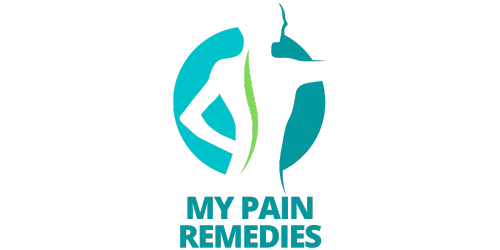Have you ever wondered if yoga can be an effective solution for reducing chronic pain? In recent years, there has been growing interest in the potential benefits of yoga for managing and alleviating chronic pain. Many individuals who suffer from conditions such as arthritis, fibromyalgia, or low back pain have turned to yoga as a complementary therapy. With its gentle stretches, controlled breathing, and mindfulness techniques, yoga offers a unique approach to pain management that promotes physical strength, flexibility, and mental well-being. In this article, we will explore the science behind yoga as a potential tool for reducing chronic pain and discover how incorporating a regular yoga practice into your routine may bring much-needed relief.

Overview of Chronic Pain
Chronic pain is a complex condition that affects millions of individuals worldwide. It is typically defined as pain that persists for longer than three to six months, extending beyond the normal healing time for an injury or illness. Unlike acute pain, which serves as a protective mechanism to signal tissue damage, chronic pain often has no clear physiological purpose and can greatly impact a person’s quality of life.
Definition of Chronic Pain
Chronic pain can manifest in various forms, including musculoskeletal pain, neuropathic pain, and visceral pain. It can be caused by a wide range of conditions, such as arthritis, fibromyalgia, migraines, or even previous injuries. The intensity and persistence of chronic pain can vary greatly among individuals, making it a unique experience for each person affected.
Causes of Chronic Pain
The causes of chronic pain are multifaceted and can stem from a combination of physical, emotional, and psychological factors. While some cases of chronic pain may have a clear underlying cause, others may have no discernible source or may persist long after the initial injury or illness has healed. Factors such as genetics, lifestyle choices, stress, and mental health can also influence the development and perpetuation of chronic pain.
Prevalence of Chronic Pain
Chronic pain is a prevalent condition that affects a significant proportion of the global population. According to the Global Burden of Disease Study, conducted in 2016, it was estimated that 20.4% of adults worldwide experienced chronic pain. This high prevalence emphasizes the need for effective approaches to manage and alleviate chronic pain, including non-pharmacological interventions such as yoga.
Understanding Yoga
Yoga is an ancient practice that originated in ancient India and has been passed down through generations. It encompasses physical postures (asanas), breathing exercises (pranayama), meditation, and philosophical principles aimed at harmonizing the mind, body, and spirit. The practice of yoga is rooted in the belief that by cultivating awareness and balance, individuals can attain a state of overall well-being.
Origins of Yoga
The origins of yoga can be traced back over 5,000 years ago to the Indus Valley, where archaeological evidence suggests the existence of yoga practices. The development of yoga as a comprehensive system is attributed to the sage Patanjali, who compiled the Yoga Sutras, a foundational text on the philosophy and practice of yoga. Over time, yoga has evolved and diversified, giving rise to various styles and approaches.
Yoga Philosophy and Principles
At the core of yoga philosophy are the principles of unity, compassion, and self-realization. Yoga emphasizes the interconnectedness of all beings and encourages individuals to cultivate self-awareness, kindness, and acceptance. The practice of yoga is not limited to physical postures but encompasses mental and emotional well-being, promoting a holistic approach to health.
Benefits of Yoga
Yoga offers a wide range of benefits that extend beyond the physical realm. Regular yoga practice has been shown to improve flexibility, strength, and balance. It can also enhance cognitive function, reduce stress, and promote relaxation. Additionally, yoga provides an opportunity for self-reflection and personal growth, fostering a sense of inner peace and harmony.
The Relationship Between Yoga and Pain
Yoga has gained recognition as a complementary therapy for managing chronic pain. It offers a holistic approach that addresses both the physical and psychological aspects of pain. Through its various components, yoga can help individuals cope with pain, reduce its impact on daily life, and promote overall well-being.
Yoga as a Complementary Therapy
Yoga is often used alongside conventional medical treatments as a complementary therapy for chronic pain. It can serve as a powerful adjunct to traditional pain management approaches, providing individuals with additional tools to manage their symptoms. By incorporating yoga into a comprehensive pain management plan, individuals can experience enhanced physical functioning, improved mental health, and a better overall quality of life.
Mechanisms of Pain Relief Through Yoga
The mechanisms by which yoga alleviates pain are multifaceted and can vary depending on the individual and the specific type of pain. Yoga promotes relaxation, reduces muscle tension, and increases blood flow and circulation, contributing to pain relief. It also stimulates the release of endorphins, the body’s natural painkillers, and modulates the nervous system, leading to a decreased perception of pain.
Types of Pain That Yoga Helps With
Yoga has shown promise in alleviating various types of chronic pain. It has been found to be particularly effective in managing musculoskeletal pain, such as lower back pain, neck pain, and joint pain. Additionally, yoga has been shown to be beneficial for individuals suffering from neuropathic pain, including conditions such as fibromyalgia and diabetic neuropathy. The gentle, low-impact nature of yoga makes it accessible to individuals of all ages and fitness levels.
Scientific Evidence
The effectiveness of yoga in reducing chronic pain has been the subject of numerous research studies. Over the years, a growing body of scientific evidence has emerged, shedding light on the potential benefits of incorporating yoga into pain management strategies.
Research Studies on Yoga for Chronic Pain
Several randomized controlled trials (RCTs) have investigated the effects of yoga on chronic pain. These studies have examined different populations, including individuals with conditions such as osteoarthritis, fibromyalgia, and chronic low back pain. By comparing the outcomes of individuals who participated in yoga interventions to those who received standard care or other active interventions, researchers have been able to evaluate the specific effects of yoga on pain management.
Findings and Results
The findings from research studies on yoga for chronic pain have been largely promising. Many studies have reported significant reductions in pain intensity, improved physical functioning, and enhanced psychological well-being among participants who engaged in regular yoga practice. These findings suggest that yoga can serve as an effective non-pharmacological intervention for individuals with chronic pain.
Limitations of the Studies
Despite the positive outcomes observed in many studies, it is important to acknowledge the limitations of the research conducted thus far. Some studies have had small sample sizes, limiting the generalizability of the findings. Additionally, variations in yoga interventions, study designs, and outcome measures make it challenging to draw definitive conclusions. Further research with larger sample sizes, standardized protocols, and long-term follow-up is needed to strengthen the evidence base and provide more specific guidance on the role of yoga in pain management.
Yoga Techniques for Pain Management
Yoga encompasses a range of techniques that can be utilized for pain management. These techniques target different aspects of the mind and body, offering individuals a comprehensive approach to alleviate their pain and improve their overall well-being.
Breathing Techniques (Pranayama)
Pranayama, or breathing exercises, is a fundamental component of yoga practice. By focusing on conscious breathing patterns, individuals can enhance their physical and mental well-being. Deep breathing techniques, such as diaphragmatic breathing and alternate nostril breathing, can help reduce stress, promote relaxation, and alleviate pain. By regulating the breath, individuals can activate the body’s relaxation response, which can counteract the physiological effects of chronic pain.
Physical Asanas (Poses)
Physical asanas, or poses, are the most recognizable aspect of yoga. These postures are designed to promote physical strength, flexibility, and balance. When it comes to managing chronic pain, specific asanas can be selected to target areas of pain or discomfort. Gentle stretching poses, such as Child’s Pose or Cat-Cow, can help relieve muscle tension and improve joint mobility. Modified poses can be used to accommodate individual needs and limitations, ensuring a safe and effective practice.
Meditation and Mindfulness
Meditation and mindfulness practices are integral components of yoga that can help individuals cultivate mental clarity, focus, and inner peace. When applied to pain management, meditation and mindfulness techniques can train the mind to shift its attention away from pain sensations and promote a more positive and accepting attitude towards discomfort. By developing a greater awareness of the mind-body connection, individuals can better regulate their pain experience and reduce its impact on daily life.
Yoga Styles and Approaches
Yoga is a diverse practice that offers various styles and approaches, each with its own emphasis and benefits. Understanding the different styles can help individuals find an approach that aligns with their needs and preferences.
Hatha Yoga
Hatha yoga is a gentle and accessible style that focuses on physical postures and breath control. It is characterized by a slower pace and a greater emphasis on alignment and technique. Hatha yoga is an excellent choice for individuals new to yoga or those seeking a gentle practice for pain management.
Restorative Yoga
Restorative yoga is a deeply relaxing and passive style that utilizes props, such as bolsters, blankets, and blocks, to support the body in various poses. It aims to create a state of deep relaxation, allowing the body to release tension and the mind to quieten. Restorative yoga is particularly beneficial for individuals with chronic pain as it promotes deep rest and restoration.
Yin Yoga
Yin yoga is a slow-paced style that targets the deep connective tissues of the body, such as ligaments, tendons, and fascia. It involves holding poses for an extended period, typically three to five minutes, allowing for a deep release and stretching of the tissues. Yin yoga can be especially helpful in managing chronic pain by promoting flexibility, improving joint mobility, and increasing body awareness.
Incorporating Yoga into Pain Management
Incorporating yoga into a comprehensive pain management plan requires careful consideration and guidance. It is essential to approach yoga practice mindfully and adapt it to individual needs and limitations.
Finding a Qualified Yoga Instructor
When starting a yoga practice, it is crucial to find a qualified yoga instructor with experience in working with individuals with chronic pain. A knowledgeable instructor can provide personalized guidance, adapt the practice to individual needs, and ensure proper alignment and safety. Seeking recommendations, researching credentials, and contacting local yoga studios or wellness centers can help identify qualified instructors in your area.
Modifying Yoga Poses for Individual Needs
Individuals with chronic pain may need to modify yoga poses to accommodate their specific limitations and discomfort. This can involve using props, adjusting the range of motion, or finding alternative poses that provide similar benefits. Working closely with a qualified yoga instructor can help individuals identify modifications that are safe and appropriate for their individual needs.
Developing a Consistent Practice
Consistency is key when it comes to reaping the benefits of yoga for chronic pain. Developing a regular practice, even if it is just a few minutes a day, can yield significant improvements over time. Starting slowly and gradually increasing the intensity and duration of the practice can help prevent overexertion and minimize the risk of exacerbating pain. Making yoga a part of a daily routine can create consistency and support long-term pain management.
Tips for Safe Yoga Practice
Engaging in yoga practice for chronic pain management requires paying attention to one’s body and practicing mindfully. Here are some tips to ensure a safe and effective yoga practice:
Start Slowly and Gradually Increase Intensity
It is important to start with gentle poses and gradually increase the intensity and duration of the practice. Pushing too hard too soon can lead to increased pain or injury. The focus should be on building strength and flexibility slowly and allowing the body to adapt to the practice over time.
Listen to Your Body and Modify as Needed
Every individual is unique, and it is essential to listen to your body and respect its limits. If a pose causes pain or discomfort, it is important to modify or skip it altogether. Individual boundaries may fluctuate from day to day, so it is important to be attentive and adjust the practice accordingly.
Avoid Overexertion or Pushing Through Pain
Yoga should never cause intense or prolonged pain. It is crucial to distinguish between the discomfort associated with stretching and the pain that indicates potential harm. If a pose or movement causes sharp or unbearable pain, it is important to stop immediately and seek guidance from a qualified yoga instructor or healthcare professional.
Other Complementary Therapies
While yoga can be a valuable tool for managing chronic pain, it can also be complemented by other therapies that offer additional benefits.
Massage Therapy
Massage therapy has been shown to provide pain relief and promote relaxation. It can help release muscle tension, improve circulation, and enhance overall well-being. Combining massage therapy with yoga practice can create a synergistic effect, promoting further pain reduction and physical comfort.
Acupuncture
Acupuncture is an ancient Chinese therapy that involves the insertion of thin needles into specific points on the body. It is believed to promote the flow of energy and restore balance within the body. Many individuals with chronic pain have found acupuncture to be effective in reducing pain and improving overall function. Combining acupuncture with yoga can provide a comprehensive approach to pain management.
Meditation and Breathing Exercises
In addition to incorporating meditation and breathing exercises within a yoga practice, these techniques can also be utilized independently to promote relaxation and reduce pain. Engaging in regular meditation or practicing deep breathing exercises throughout the day can help individuals manage their pain, improve their mental well-being, and enhance their overall quality of life.
Conclusion
Yoga holds great promise as a complementary therapy for individuals with chronic pain. Its holistic approach to pain management, focusing on both the physical and psychological aspects of pain, makes it a valuable tool in improving quality of life and overall well-being. While scientific evidence supports the benefits of yoga for chronic pain, further research is needed to strengthen the evidence base and provide more specific recommendations. By empowering individuals with chronic pain to explore yoga and other non-pharmacological interventions, we can collectively strive towards a future where chronic pain is effectively managed and individuals can lead fulfilling lives.


